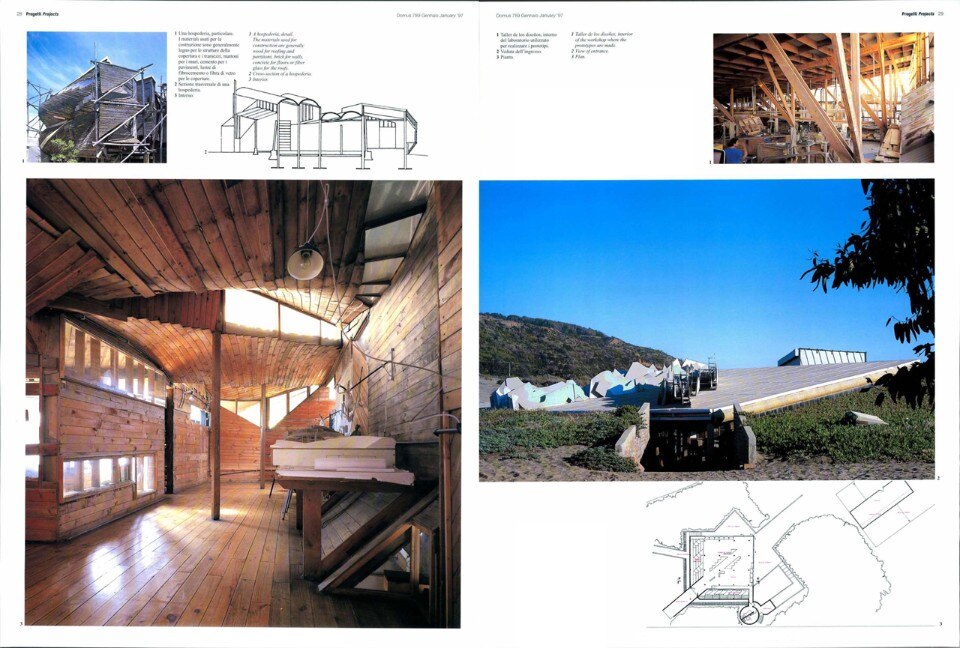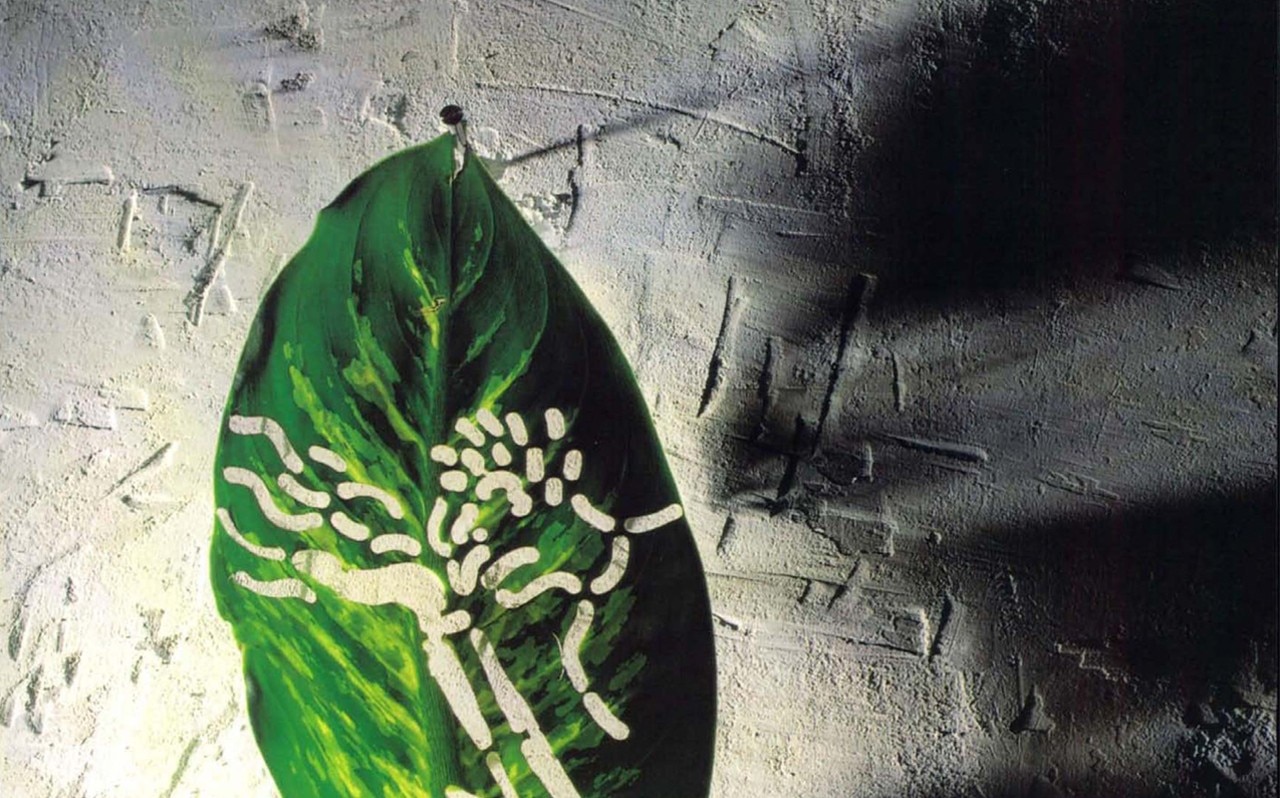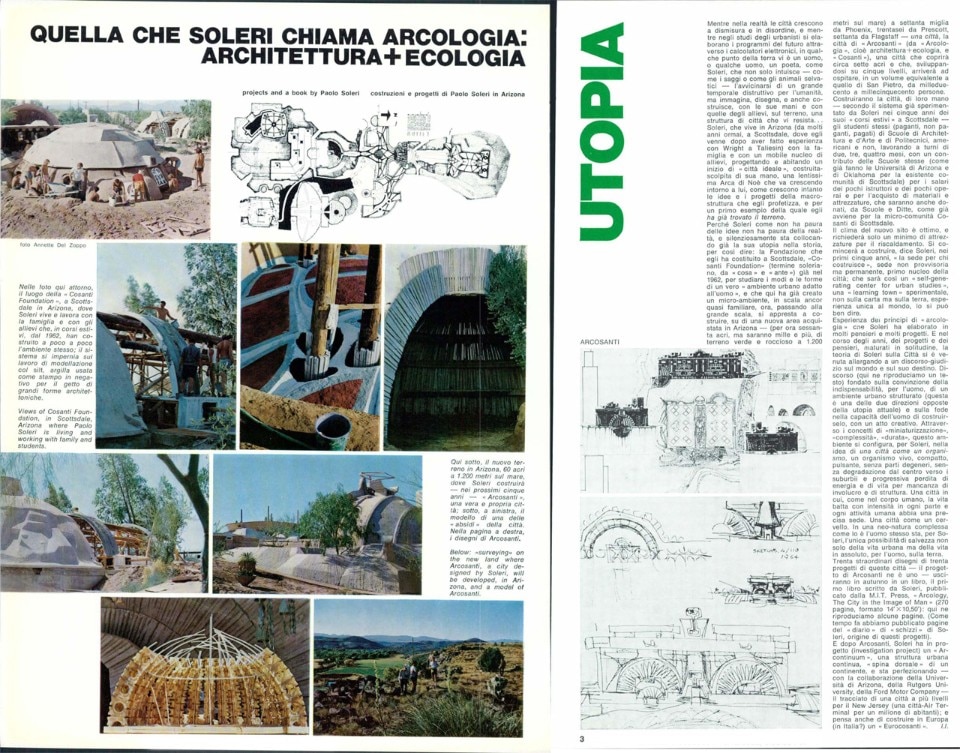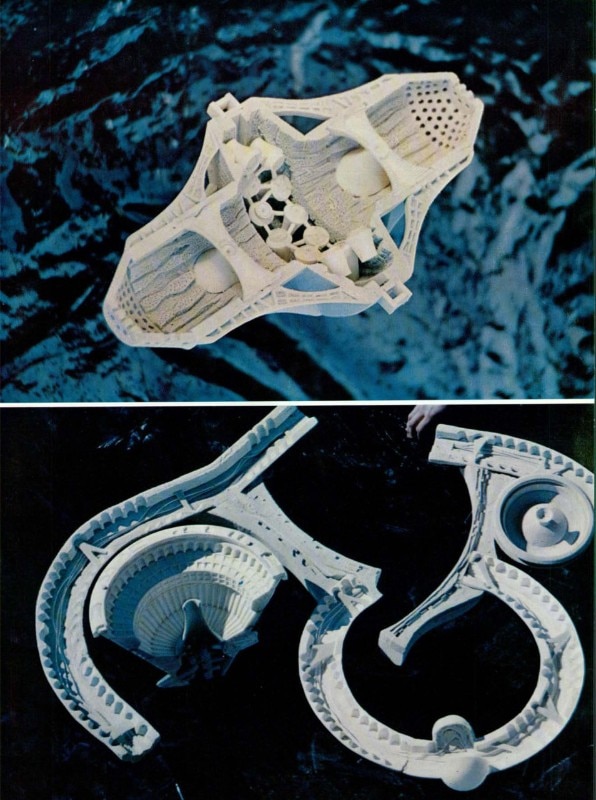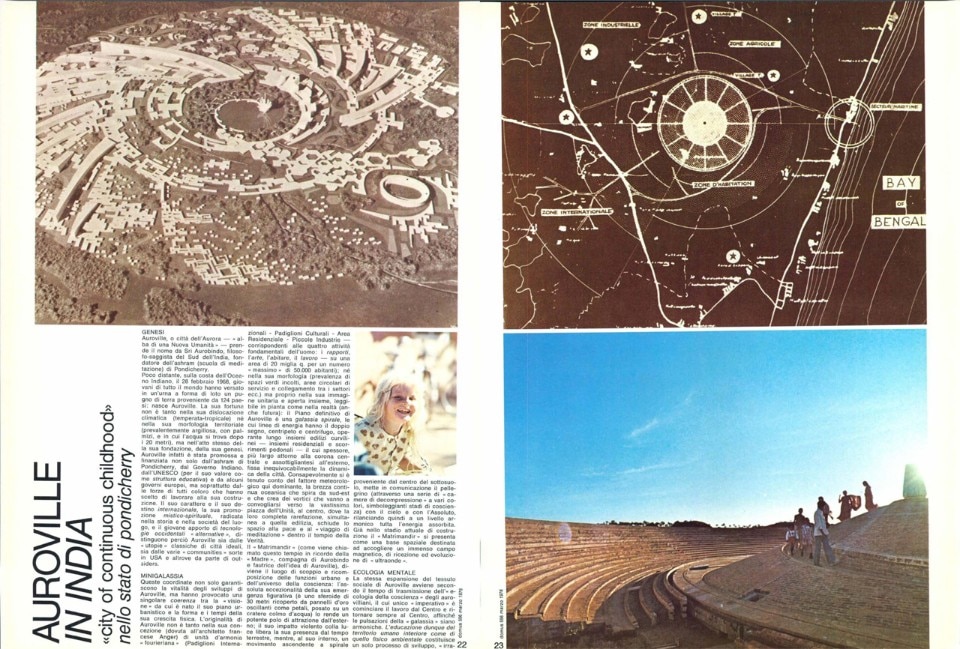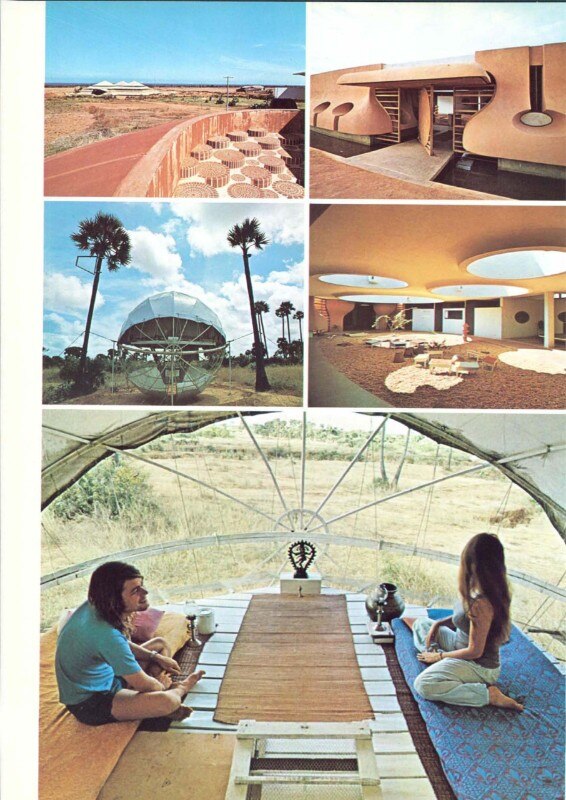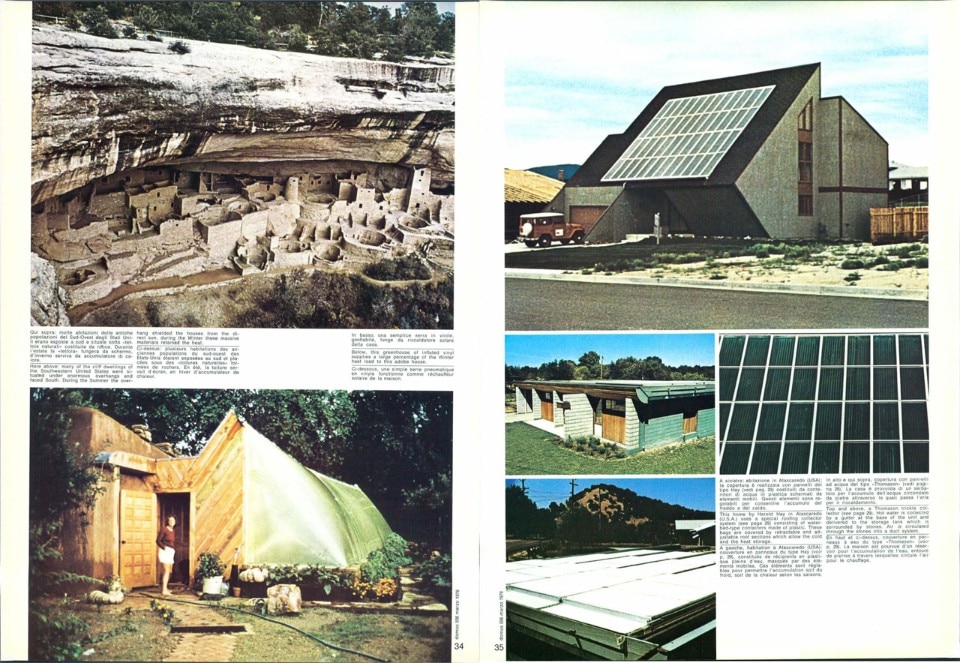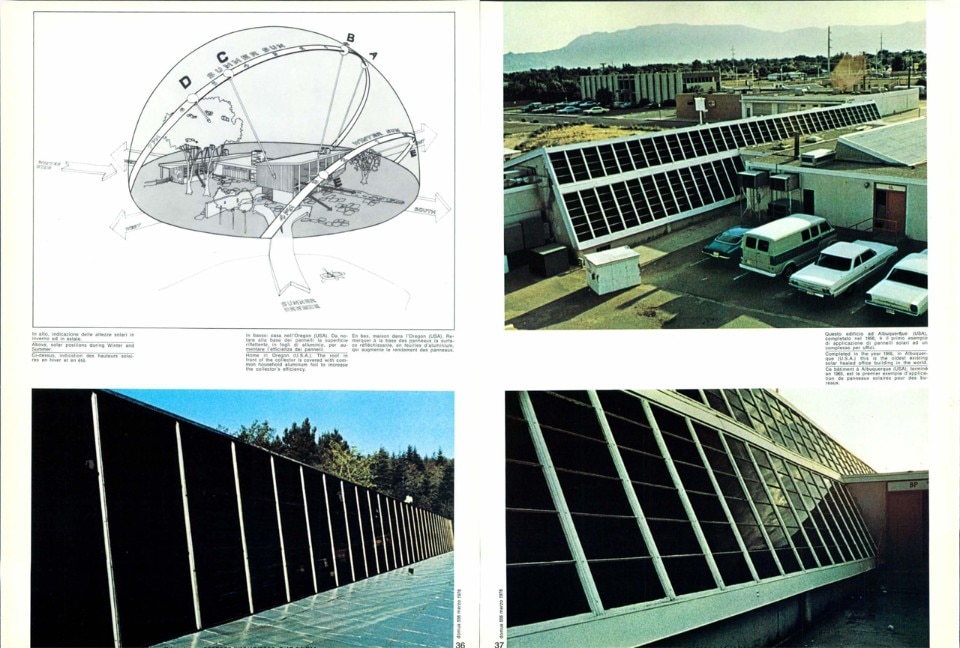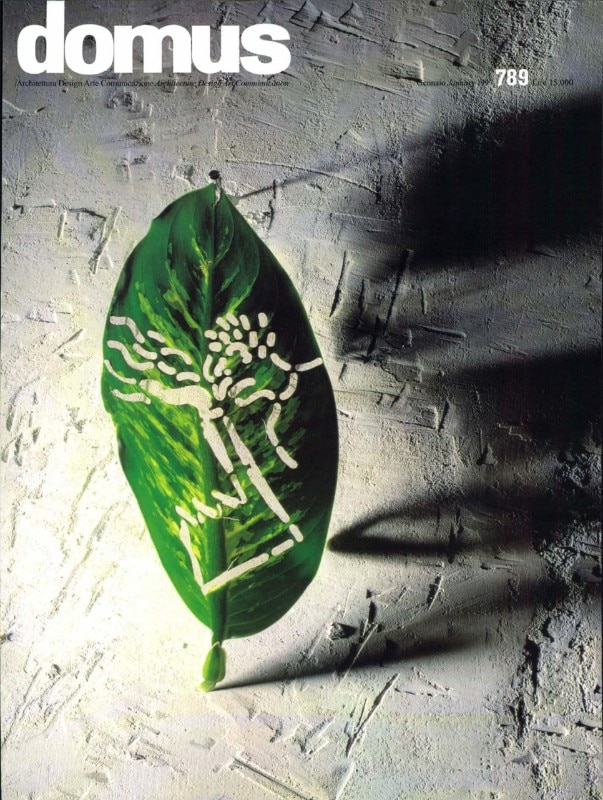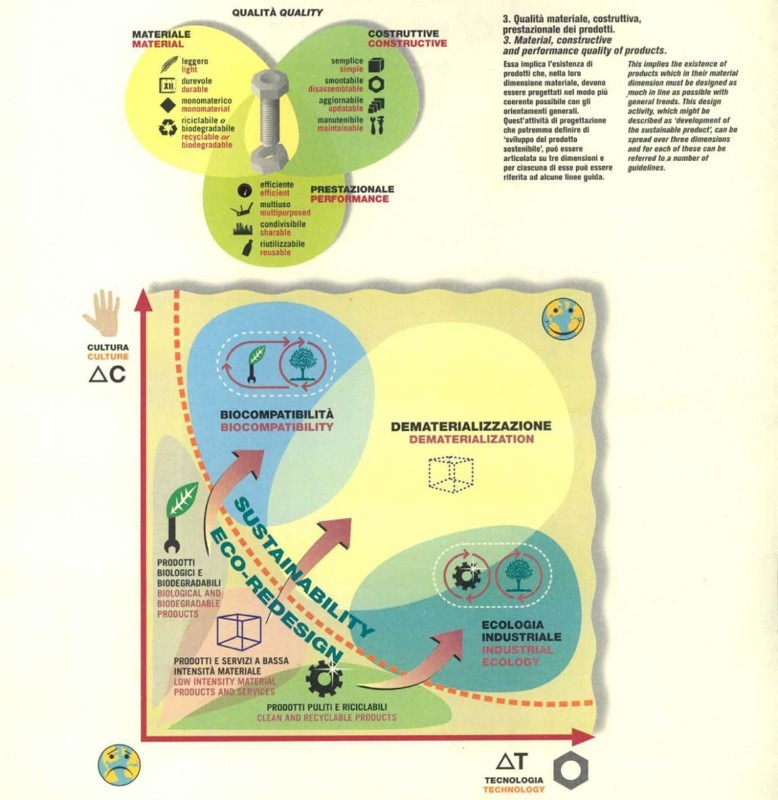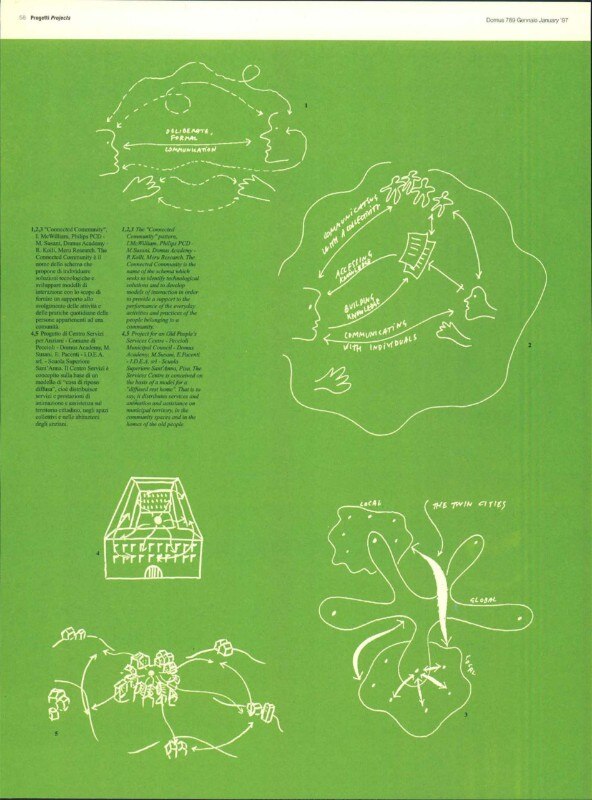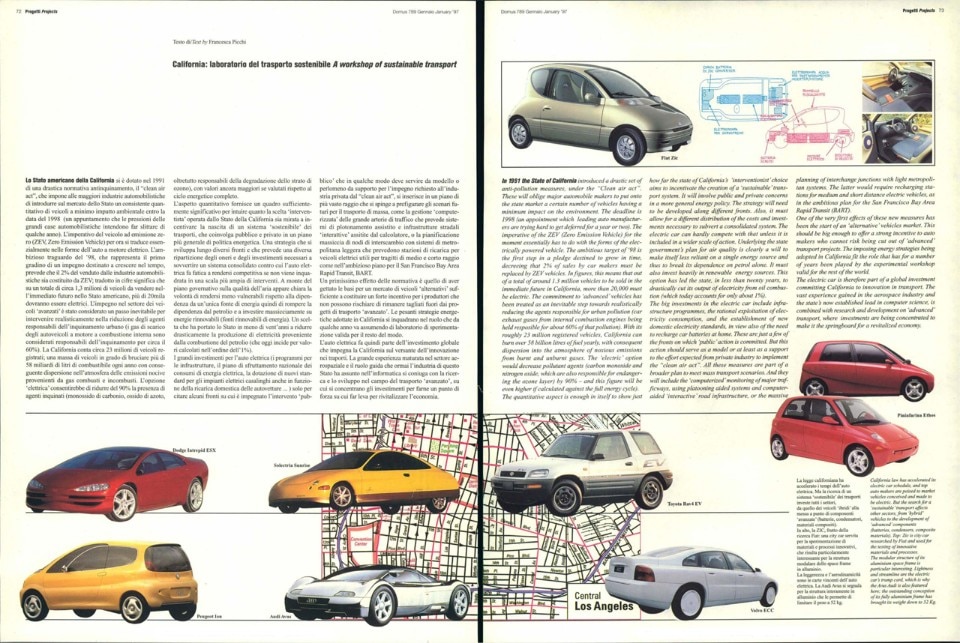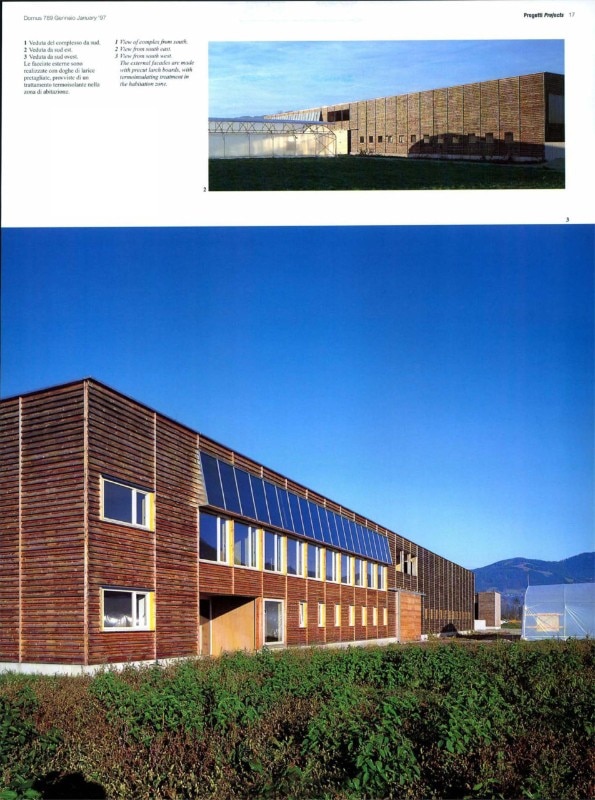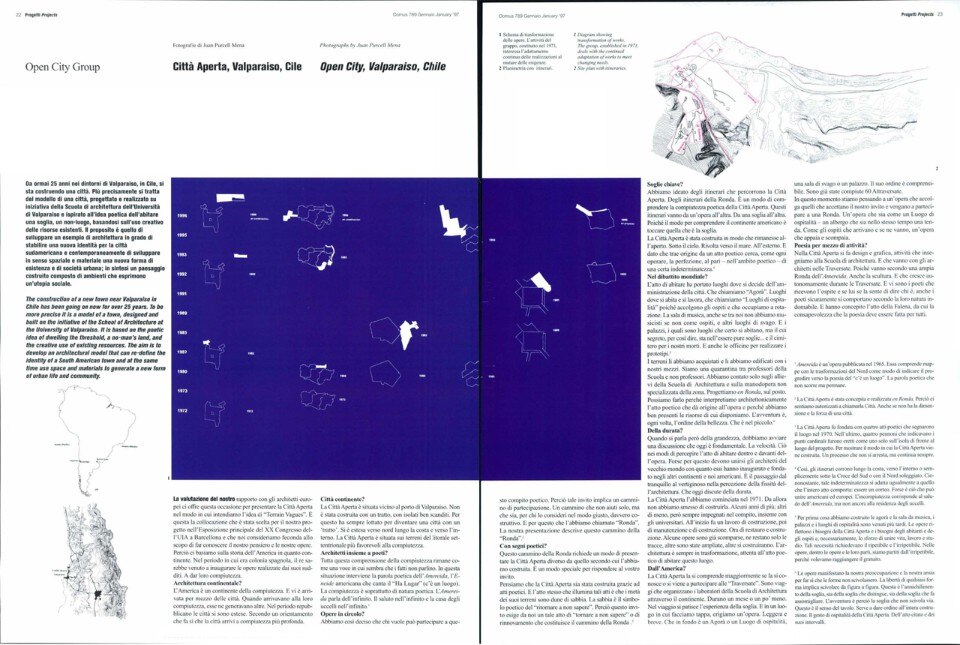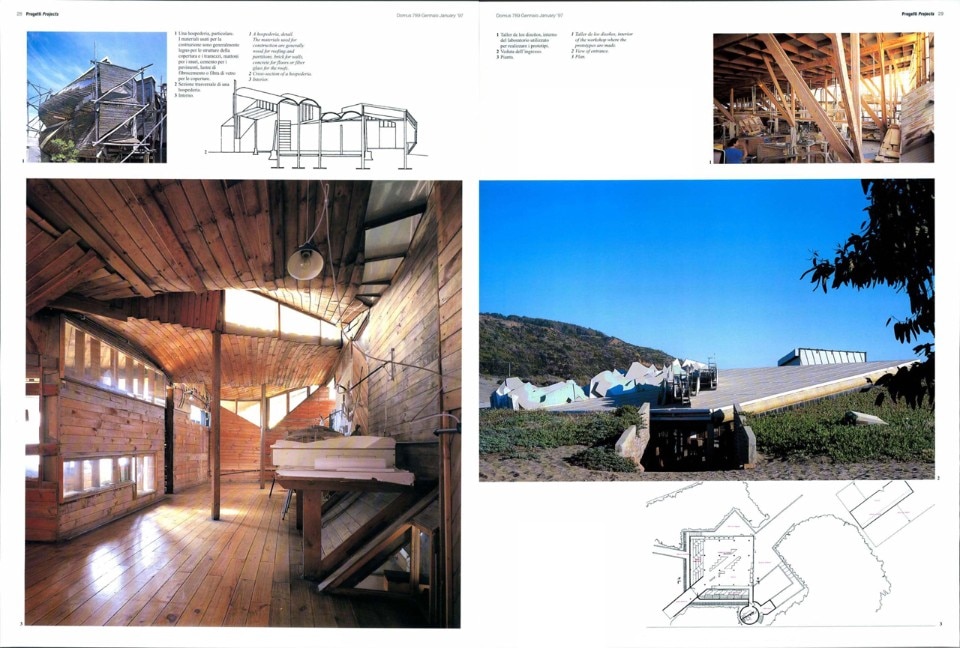Browsing through the Domus archive, it results that sustainability was born twice. Luckily, as today it is almost easier to apply this notion than to define it, isolating its definition within conmporary media overproduction – within the 2305 Domus archive records related to this word, for example.
Domus would give voice since the very beginning to those warning signals that aimed to draw attention on the need to protect a planet that we had been ruthlessly exploiting and robbing, as well as on the first actions aiming to respond to such emergency. The only detail to be remarked is, in fact, that over the years different words have been used to express them.
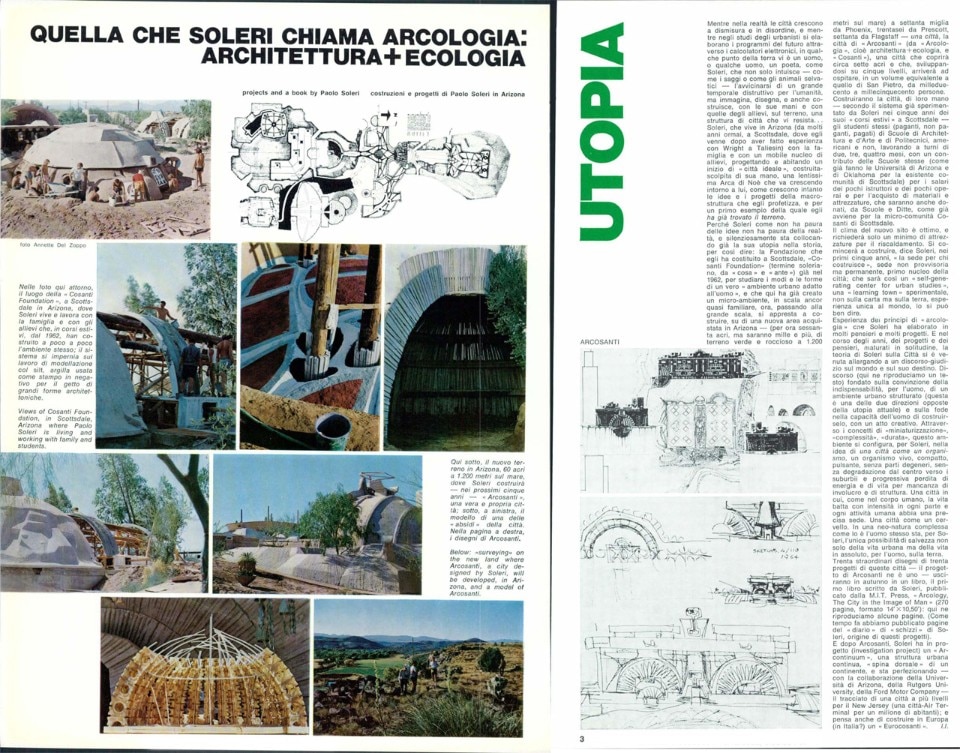
Since the 60s, sustainability has been ecology on Domus, the answer to the emergency is through the knowledge of our global home, through science, which is very close to science fiction: it is no coincidence that the first time the word “ecology” was spoken on Domus – through the lines by Agnoldomenico Pica – it was Richard Buckminster Fuller to pronounce it (Domus 435, February 1966). Later came Christo, to claim ecology as a political priority for artists (Domus 549, August 1975).
Ecology is the science of human settlement in the world, indeed in the universe, which is not a separate entity from man, but represents with it the two ‘complementary and interactive aspects of one single process’
Richard Buckminster Fuller. Domus 435, 1966
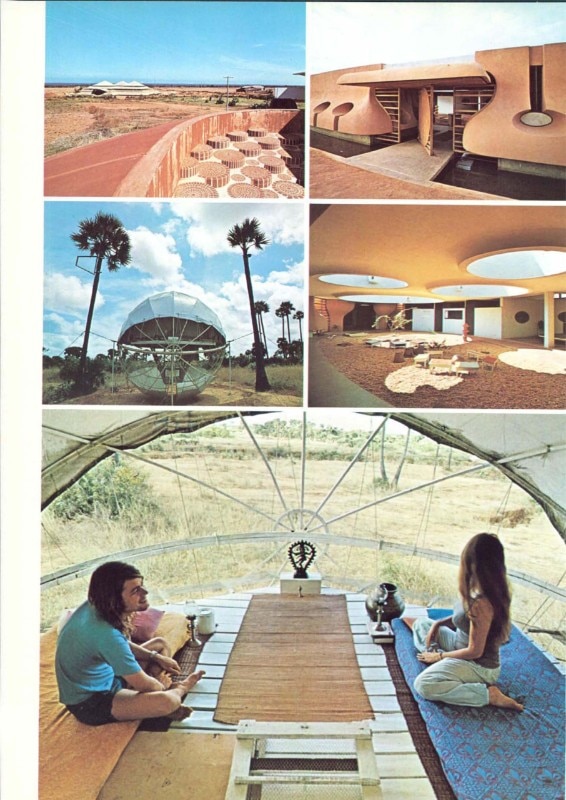
The general approach would partly sound esoteric, evoking constructed utopias, represented by the content landing on Domus: it was Paolo Soleri's Arcology (architecture + ecology) taking shape in the Arcosanti settlement in the middle of the Arizona desert; it was the balancing act between “inner human territory” and “physical environmental territory” on which Auroville, in southern India, was founded in 1968.
And later, immediately following the pages of Auroville – developed as a spiral galaxy in harmony with the swirls of the ocean breeze, self-sufficient in cultivating and regenerating at the same time the surrounding territory − a 10-page study appears, dedicated to solar energy (Domus 556, March 1976).
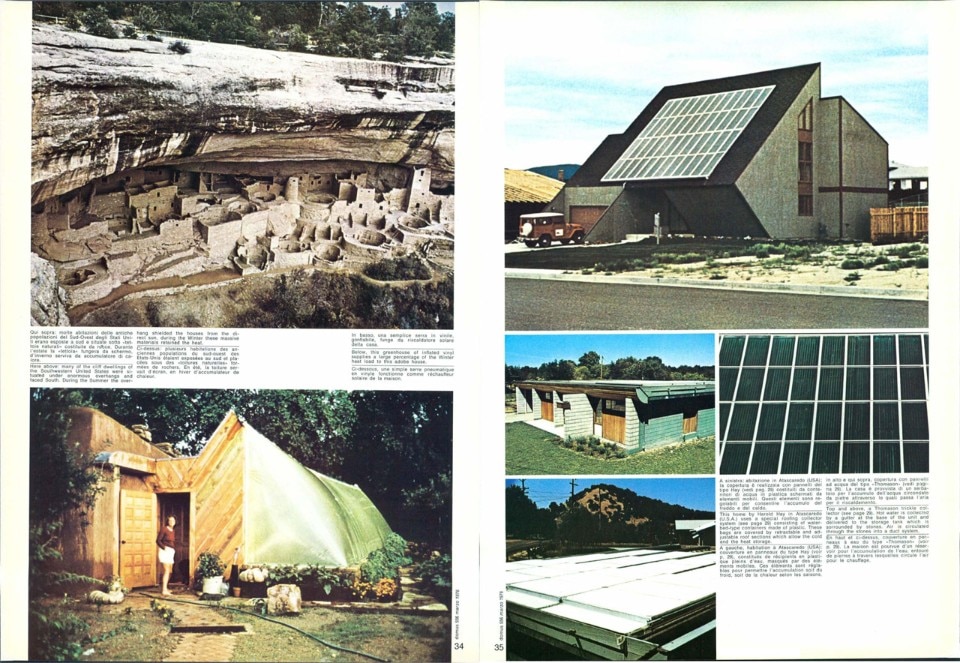
The 80s might generally appear as a pausing time, but this turns out being pure appearance, as by the following decade Domus debuts in a now global debate without the slightest hesitation: issue 789 of February 1997 is entitled Designing Sustainability, marking the debut of the word in the magazine and containing all those trajectories that, not too surprisingly, are still central themes today in designing our relationship with the planet. “To arrive at an advanced stage of ‘ecological conscience’, an accord among researchers, industry and the collectivity must be reached; and that can only be accomplished through the involvement and participation of all” wrote François Burkhardt in the opening words: the awareness was the same as in the 60s, but this time it broke into reality, into projects. With the risk, in that phase of semantic settling, of sometimes straying too much into technicality, sustainability came out of the domain of utopia and entered the philosophies and practices of the project.
If sustainability is really to be designed, then other aspects must also be taken into account. Furthermore, the bearing functions - be they social, economic, political or cultural - of progress in general must be constantly balanced.
François Burkhardt. Domus 789, 1997
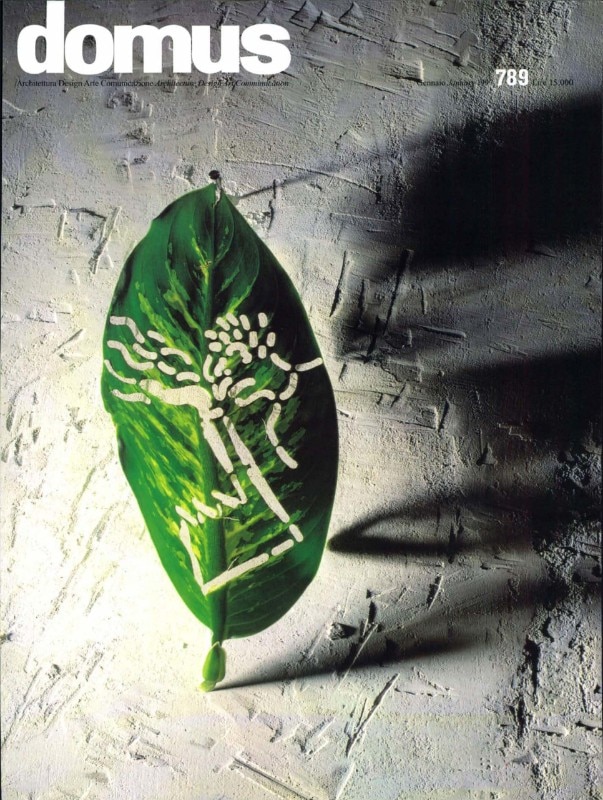
On those pages, the entire political project of new countries found space, such as Václav Havel’s Czech Republic, seeking a new sustainable agricultural path after a past of extractivist forcing.
Above all, design found space; the early-millennium words of sustainable design paraded all together across columns and editorials: the leapfrog, the systemic discontinuity evoked by Ezio Manzini whereby “mature industrial societies will have to “leap out of” the production and consumption system practised to date and indicated as a model to be followed by developing societies (and) the latter will have to “leap beyond” (…) so as to arrive instead directly at more advanced and sustainable social and productive systems”; control on the production and supply chains, control of the life cycle of products; eco-performative technologies and materials; mobility, still in terms of individual transport, but already on electric vehicles, envisioned as recyclable objects.
The discourse would also include that ecology of the mind sketched out in Auroville, but in the global vision of refusing a capitalist exploitation model, an action that the scholar Kapyla Vatsyayan associates with those human beings live and conduct themselves in "...a spirit of humility that he is only one amongst many other living organisms on this planet Earth."
The debate on sustainable development (…) has to become a philosophic principle (…), the realisation that man will be able to sustain himself only if the self-regulating ecosystem of the universe continues and is not disrupted by man’s intervention
Kapyla Vatsyayan. Domus 789, 1997
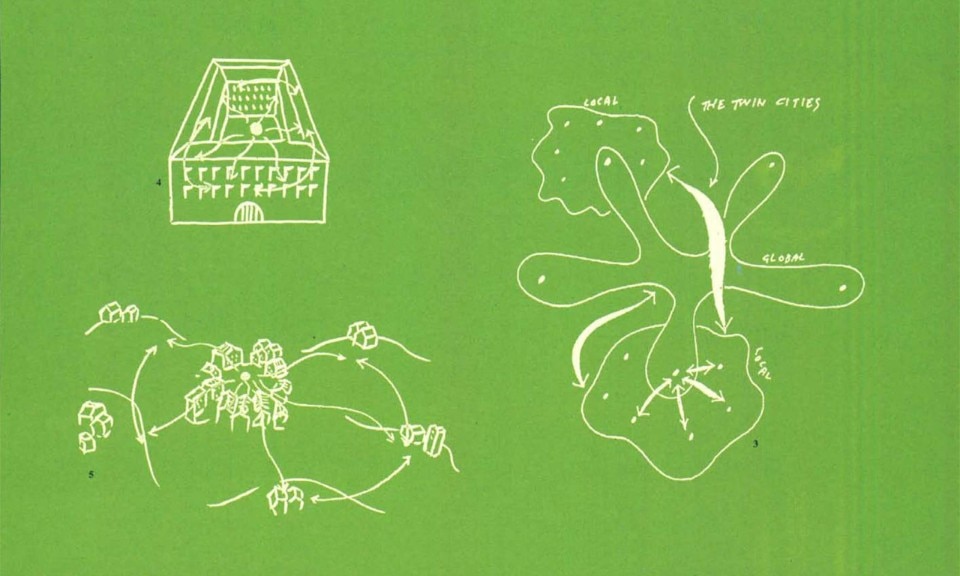
Architecture is expressed in this context by projects – organic farms, contemporary houses in landscapes needing protection, industrial “ecosystems” – that seek sustainability in technological solutions but above all in a new sensitivity to a context that is both natural and cultural.
And it is precisely here that the circle of the “two births” of sustainability on Domus completes, to pour its content into the global debate: the late-millennium novelty is the emphasis on social sustainability, an intervention on space that is also an intervention on the already existing inequalities that run through it: Ciudad Abierta (“Open City”) in Valparaiso, made up of a fluid living, of thresholds more than houses, is indeed a community of “otherness” like Arcosanti, but in its post-utopian phase, heading towards its third life decade during late 90s, it wanted to be a model for contemporary developing cities. Sustainability had finally taken on its science component to turn fiction into a way of transforming reality, and protecting the planet.
